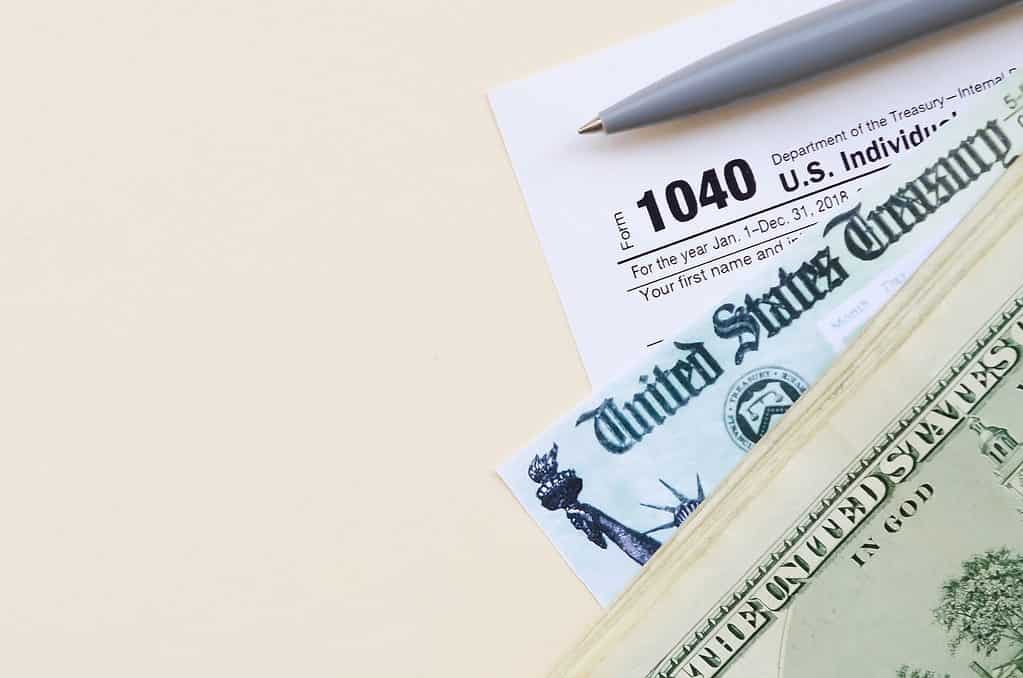As you’re getting ready to file for your 2021 tax return, you should also be looking ahead toward your 2022 finances. In order to do that, you have to stay informed on US federal tax brackets and how they have changed.
Not sure what that means? Don’t worry — this article will tell you everything you need to know about 2022 tax brackets and changes while keeping things simple.

What Is A Tax Bracket?
Let’s start with the basics.
A tax bracket is a range of incomes that is subject to a particular tax rate. Americans with higher incomes pay a higher percentage of their income in tax — that’s called a progressive tax system.
In other words, the more you earn, the more you pay in taxes. If you don’t already know your tax bracket, you can talk with your tax advisor (or find your income level on the list below).
Brackets vs. Rates
When you read about tax brackets, you’ll see 2 crucial terms: brackets and rates. So, what’s the difference?
The bracket is the group of tax filers who earn a certain income, while the rate is the percentage of their income they pay in taxes. For example, Americans who make over $40,125—that’s their bracket—will pay a rate of 22% in 2022.
Brackets and rates can change independently of each other. Rates are often adjusted based on political and economic circumstances, while brackets are changed each year to adjust for inflation. 2022 is no exception.
Married vs. Single Filers
Every tax bracket is broken into 2 categories: 1 for single filers, and 1 for married couples filing jointly. The bracket for married filers is double the amount for single filers. In other words, when 2 people file their taxes together, their income is expected to double.
If you file taxes jointly with your spouse, your combined income will determine your tax bracket. It doesn’t matter if one spouse earns more or less than the other.
How Do Tax Brackets Change?
Tax brackets are adjusted annually to account for inflation. As the cost of living goes up, tax brackets shift along with it. That way, your income level is always a reflection of your wealth.
Think of it this way: someone who earned $100,000 in 1950 would be able to pay a much higher percentage of their income in tax than someone who earned $100,000 in 2021. That’s because we pay more for food, housing, and luxury today.
Inflation is measured through the Consumer Price Index or CPI. This index shows the change over time in prices for ordinary necessities, like groceries and rent.
To adjust tax brackets, the IRS uses a “chained CPI,” which measures consumer responses to price changes. That might sound complicated — but all it means is a measure of how much we pay and how it affects us.
Tax Bracket Changes In 2022
Tax rates in 2022 are the same as they were in 2021: 10%, 12%, 22%, 24%, 32%, 35% and 37%.
Tax brackets, on the other hand, have changed slightly. Many filers could be in a new tax bracket for 2022 than they were in 2021, even if their income doesn’t change this year.
Knowing your tax bracket ahead of time can help you to plan for the upcoming tax season and make sure you get the highest possible return next spring. To help you out, here are the current tax brackets for 2022:
- 37% for incomes over $523,600 ($628,300 for couples filing jointly)
- 35% for incomes over $209,425 ($418,850 for couples filing jointly)
- 32% for incomes over $164,925 ($329,850 for couples filing jointly)
- 24% for incomes over $86,375 ($172,750 for couples filing jointly)
- 22% for incomes over $40,525 ($81,050 for couples filing jointly)
- 12% for incomes over $9,950 ($19,900 for couples filing jointly)
- 10% for incomes up to $9,950 ($19,900 for couples filing jointly)
These brackets are only slightly different from 2021 income tax brackets. However, it’s essential to keep track of the changes. If you were on the border between brackets last year, you might find yourself in a different tax bracket for the same income this year.
Other Changes in 2022
Tax brackets have been slightly adjusted for 2022, but that isn’t the only change. Other factors have been modified that could affect your filing for this year.
Here’s what you need to know:
Capital Gains
A capital gain is a taxable income acquired by selling an asset or investment. While capital gains are taxed at a lower rate than average income, they are also divided into brackets.
Tax rates for capital gains in 2022 have not changed, but brackets have been slightly adjusted for inflation. Most taxpayers will still pay a minimum of 15% on their capital gains this year. However, that rate jumps up to 20% when the income from capital gains exceeds the 37% threshold for ordinary income.
This change mainly applies to serious investors and traders of fine arts or goods.
Standard Deduction
A standard deduction is a money that can be reduced from your taxable income. This dollar amount is determined by a few factors, including student loans and dependents (kids). Standard deductions fluctuate every year, based on inflation and other economic factors.
In 2021, the predicted standard deduction for a single filer is $12,550. If you can be claimed as a dependent on someone else’s taxes (a parent or guardian), your standard deduction is $1,100, or your earned income plus $350.
Student Loan Interest
A lot of young Americans have to take on debt to go to college. If you’re paying off student loans, your taxable income can be reduced based on the interest you pay. In 2021, there was a maximum $2,500 deduction for interest paid on student loans. That deduction will stay in place for 2022.
However, if your annual income for 2022 exceeds $70,000, that deduction may not apply. It is completely phased out for anyone who earns over $85,000.
Final Thoughts about 2022 Tax Brackets and Changes
Changes in tax brackets are nothing to panic about. They help to keep our progressive tax system fair and ensure that no one is paying more than they can afford in taxes.
But it is vital to keep track of changes as they happen! You should always be aware of your tax bracket and any other changes that are relevant to your situation. As long as you know what to expect, filing your taxes for 2022 will be a breeze.



















